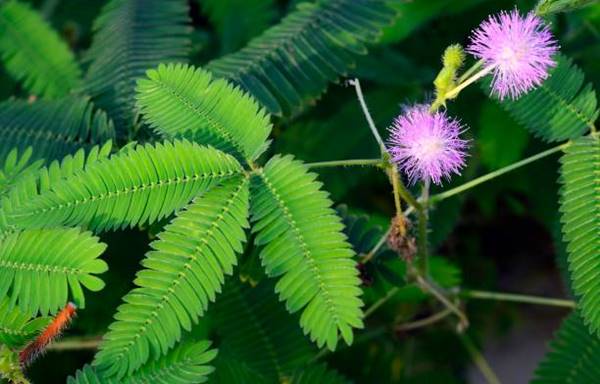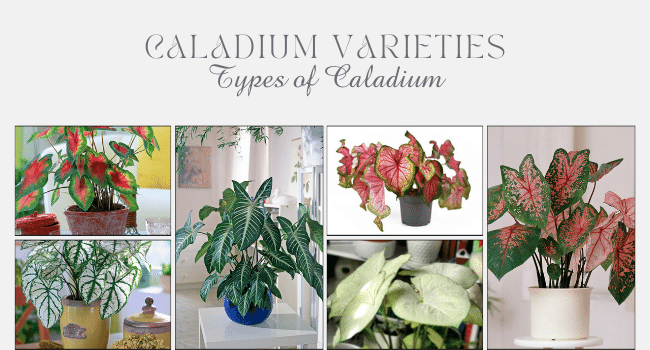How to Grow Sensitive Plant in a Container | Sensitive Plant Care
A unique feature of the sensitive plant is when you touch Sensitive plant it closes its leaves. But how to grow the sensitive plant in a container? We’ll learn in this post!
At one point in time or another, we all have been fascinated by the ‘Sensitive plant’ or ‘Touch me not’ plant. As kids, we all wanted to own one and watch as the leaves close by our touch and open again when left undisturbed. Well, now, you can have your childhood dream of having a sensitive plant come true. The fern-like foliage and attractive globular purple flowers further accentuate the beauty of this splendid plant. The sensitive plant is considered invasive in some regions, so by growing its container; you’ll be able to keep it contained. This post discusses how to take care of sensitive plants and grow them in containers.

Sow seeds or plant mimosa sensitive plant cutting in the 5-6 inch wide and deep container. Loose soil that’s well-draining and loamy is ideal for the container. To facilitate germination, soak the seed for 24 hours or remove the outer shell. Apply a liquid fertilizer diluted half to its strength and rich in potassium. Keep the soil moist but don’t overwater.
Scientific Name: Mimosa pudica
Common Names: Sensitive plant, Touch-me-not plant, Sleepy plant, Dormilones, Zombie plant, Shy lady, Shy plant, Shameplant, Action plant.
Preparation for Growing Sensitive Plant in a Pot

Choosing the Container
Ideally, you’ll want to grow the sensitive plant in a container where its roots are a little restricted. Start with a small pot that’s 3 inches in size for sowing seeds. After the seeds germinate and the plant is well-established, transplant it to a large pot that’s 5-6 inches in diameter. You can skip the transplanting part by directly growing sensitive plants in the large pot. A sensitive plant does not like to sit in water so ensure that drainage holes are present at the bottom of the pot.
Propagating Sensitive Plant
Sensitive plant is usually propagated from seeds, but you can also easily propagate it using cuttings. In fact, propagating sensitive plants from cutting is the quickest way to propagate them as you won’t have to wait for the seeds to germinate. Although, growing the mimosa plant from seeds is your only option if you can’t find a mimosa plant or already don’t have one.
Propagation from seeds: Buy the sensitive plant seeds from the nearest trusted garden store or online nursery or store them from the sensitive plant. Take off the outer brown seed covering by using tweezers or scratching the seed to get the green inner seed. Another alternative is to soak the seeds for 24 hours before planting to weaken the outer shell and facilitate germination. Sow the container’s seeds an inch below the surface before the expected last frost indoors and place the pot somewhere it receives ample lights. Under grow lights and adequate temperature, you can grow sensitive plants all year round in the indoor space.
Propagation from Cuttings: If you have an existing sensitive plant or can find one in the neighborhood, it’s the fastest way to propagate a sensitive plant. Take the cutting from a healthy plant that contains at least one leaf node at an angle. Dip the end of the cutting in a rooting hormone and plant it in the pot. Plant the cutting at a suitable depth to not fall over due to its self-weight or during watering.
Requirements for Growing Sensitive Plant
Temperature
It’s a tropical plant, so it goes without saying that it’ll not tolerate cold and frost. The sensitive plant does well in moderate temperature ranges that lie from 65 degrees F to 75 degrees F. Protect the plant when the temperature falls below 65 degrees F by moving the container to a warmer spot. Yellow leaves and stems indicate cold damage; be on the lookout for such signs.
Location
Choose a spot that receives 6-8 hours of direct sunlight or partial light for a healthy and growing plant. The good thing about growing a sensitive plant in a container is that you can move it to a spot where it can bask in the afternoon sun. If the plants do not receive enough sunlight, the leaves close in the daytime.
Soil
Soil that’s rich in organic matter, well-draining, and loamy works well for growing “touch me not” plant. Make your own potting mix by mixing equal parts loam and peat moss and half part sand or perlite to improve drainage. If that’s too much of a hassle for you, choose an all-purpose commercial soil. Make sure to check the label and see the ingredients while buying the commercial soil.
Watering
Your goal should be to keep the soil moist but not overly wet or soggy as it can cause root rot. Check that the soil is dry an inch below the surface before watering again. Weather conditions also affect watering cycles; in hot conditions, you may need to water regularly, reducing watering once a week in cold conditions. Ensure that the excess water drains out from the bottom of the pot and isn’t accumulated at the pot’s base.
Sensitive Plant Care
Caring for a sensitive plant is not difficult at all and after going through the points below you’ll know exactly how to care for a sensitive plant!

Pruning
The sensitive plant spreads with age, so to keep it contained in the pot, pruning becomes relevant. Also, pruning prevents the plant from leggy and keeps it in a desired shape and size. Use a sharp pair of pruning shears or scissors to prune back the sensitive plant.
Fertilizer
Sensitive plant is used to soils that are poor in nutrients in its natural habitat so you won’t need to fertilize if the soil is of good quality. However, if the soil is of poor quality or the plant’s growth is shunted, you can go for a liquid fertilizer diluted to half its strength. Apply the fertilizer once a week during the growing season and cut back to once a month during winters.
Pests and Diseases
Some common garden pests such as spider mites and aphids can bother sensitive plants, but apart from that, there are hardly any pest related issues. Handpick such pests or wipe them with a clean wet cloth; if the problem persists, spray neem oil solution over the plant. As the plant thrives in high humidity, it’s prone to fungal diseases. Ensure that there is good air circulation around the plant to keep fungal diseases at bay.
Note: Do not use pesticides or insecticidal soaps for pests as they can damage the sensitive plant’s leaves.





